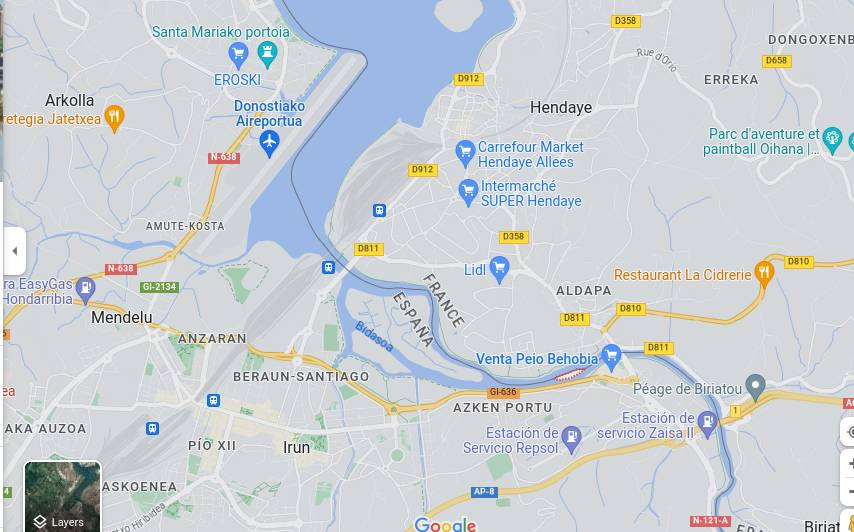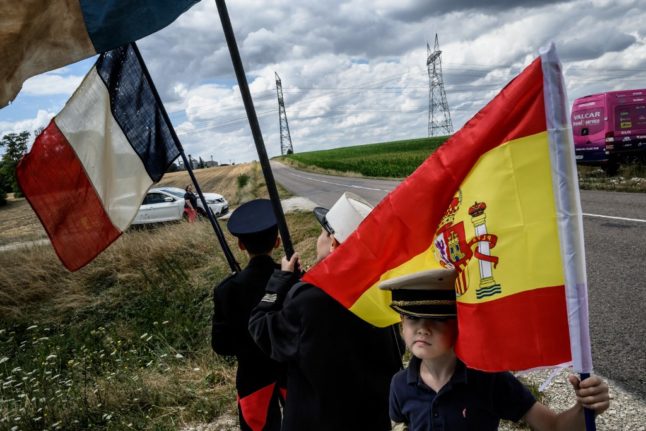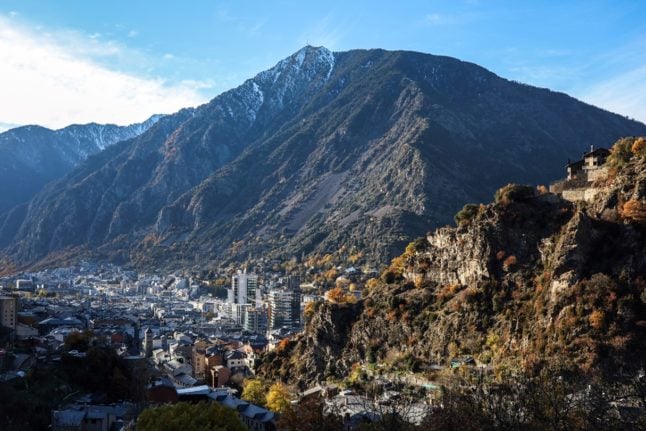Most of the border between France and Spain is a land border, running through the Pyrenees and decorously diverging when it gets to Andorra.
But the northern-most portion of the border, which takes in the Basque Country, runs down the centre of a river. In the middle of this river is a very small island – 200 metres long, 40 metres wide, population 0.

Despite being tiny, it has five different names; Île des Faisans or Île de la Conférence if you’re speaking French, Isla de los Faisanes in Spanish or in the Basque language either Konpantzia or Faisaien Uhartea Konferentziako Uhartea. All of these translate to either ‘pheasant island’ or ‘conference/treaty island’.
Fun fact: there are no pheasants on pheasant island (the name is believed to be a mis-translation). And at 0.00682 km square it’s unlikely to have much of a future as a conference centre.
The reason we’re talking about this island is its unique nationality status – from February 1st to July 31st each year the island is part of Spain, then on August 1st it becomes French and remains so for the next six months.
So how did it end up with this weird status? Especially as, a little further up the river is the larger island of Isla Santiagourra – in this case the border simply goes round the island, which is Spanish 365 days a year.
The 1856 Treaty of Bayonne which formalised its hybrid status stated that “Pheasant island, to which so many historical memories common to the two Nations are attached, will belong, undivided, to France and Spain”.
International treaties of this period aren’t exactly famous for careful consultation with locals and the island is, as we already mentioned, uninhabited. There’s no contemporaneous explanation of exactly why it was felt so important to respect “historical memories” but it could simply that no-one could be bothered to argue over this tiny lump of land, or that it was handy to have a ‘neutral space’ along the border.
The island came to prominence 200 years earlier when the 1659 Treaty of the Pyrenees was signed there, bringing an end to decades of war between France and Spain and establishing the Franco-Spanish border (and giving the island its secondary title of ‘treaty island’).
It remained for decades a ‘neutral’ space that was often used as a handover spot by the French and Spanish, but the rotating nationality was only formally established by the 1856 Treaty.
The treaty also appointed two viceroys to run the island – the naval commanders of San Sebastian (Spain) and Bayonne (France), which gives the island its further distinction of having the only French example of the quasi-royal title of viceroy – the term comes from the French vice-roi meaning someone who deputises for the king.
In reality, it is administered by the mayor of Irun during its Spanish phase and the mayor of Hendaye during the French phase.
Talking of royalty, the island has an especially royal history – and long before the treaty that cemented its special status it was used as a meeting place for royals from France and Spain.
In 1659, Louis XIV met his future wife Maria Theresa of Spain at the island. Relevant paperwork signed, she said goodbye to her father Philip IV of Spain and crossed into France to become his queen.
In 1721, Louis XV met his intended bride Mariana Victoria of Spain there, this time however the meeting was less successful and the two ended up marrying other people.
The bride-swapping went both ways – Elisabeth of France, daughter of Henri IV, met her future husband Philip of Spain on pheasant island.
And it’s not just women who were traded there – children were too.
In 1526 François I, who was being held hostage by Spanish king Charles V, was taken to the island where he was swapped for his two eldest sons. The boys lived as hostage as the Spanish court for four years, until the French royals agreed to pay an enormous ransom. The scene of the handover? Pheasant island, naturally.
The island is uninhabited with no regular transport there – so if you want to visit, you will need to wait for the next Journée du patrimoine (heritage open day) when the island is, sometimes, open to the public.
Pheasant Island is not the only weird, quasi-royal space on the Franco-Spanish border – there is of course also the principality of Andorra, which is (nominally at least) ruled jointly by the French president and the Bishop of Urgell – they rule as ‘co-princes’ which means that, technically Emmanuel Macron is a prince.



 Please whitelist us to continue reading.
Please whitelist us to continue reading.
Member comments